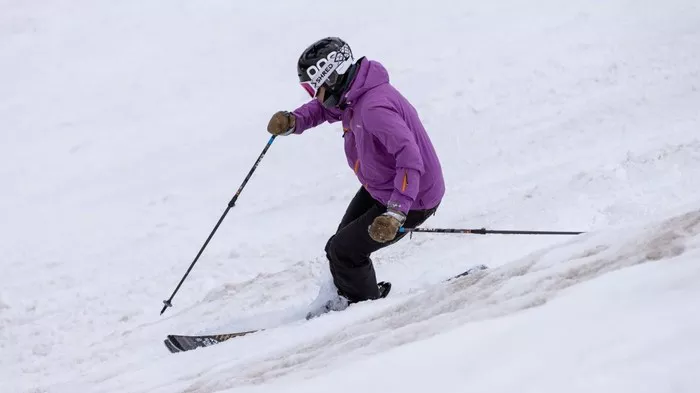Mount Fuji, Japan’s highest peak and an iconic symbol of the country, draws millions of visitors each year with its majestic presence. While renowned for its beauty and hiking opportunities in the warmer months, Mount Fuji transforms into a winter wonderland during the colder season, offering a unique and thrilling experience for outdoor enthusiasts. One of the most exciting activities to partake in during this time is skiing. In this article, we’ll delve into the world of skiing on Mount Fuji, exploring the terrain, the experience, and everything you need to know to plan your winter adventure.
Skiing Terrain and Conditions
Mount Fuji, standing at 3,776 meters (12,389 feet) above sea level, boasts several ski resorts around its base, each offering a range of slopes suitable for various skill levels. The closest ski resorts to the mountain are located on its northern and eastern slopes, where the terrain is more conducive to winter sports. Notably, resorts like Fujiten Snow Resort and Snowtown Yeti provide a diverse mix of runs, from gentle slopes ideal for beginners to challenging descents for seasoned skiers and snowboarders.
The winter conditions on Mount Fuji are characterized by cold temperatures and heavy snowfall, creating a powder paradise for winter sports enthusiasts. The season typically runs from late December to early April, with peak snow conditions occurring in January and February. Skiing on Mount Fuji not only offers exhilarating runs but also stunning panoramic views of the surrounding landscapes, including Lake Yamanaka and Lake Kawaguchi.
Preparing for Your Ski Adventure
Before embarking on your skiing journey on Mount Fuji, it’s essential to prepare adequately to ensure a safe and enjoyable experience. Here are some key considerations:
1. Gear: Make sure you have appropriate ski or snowboard equipment, including warm clothing, gloves, goggles, and waterproof boots. Many resorts offer rental services if you prefer not to bring your gear.
2. Weather Conditions: Check the weather forecast and avalanche risk before heading out. It’s crucial to be aware of changing conditions, especially when skiing on a mountain as prominent as Mount Fuji.
3. Skill Level: Choose a ski resort that aligns with your skill level. Some resorts cater primarily to beginners, while others offer more challenging runs for advanced skiers and snowboarders.
4. Transportation: Plan your transportation to the ski resorts in advance. Many resorts provide shuttle services from nearby train stations, making it convenient to access the slopes.
The Skiing Experience
Once you’ve arrived at one of Mount Fuji’s ski resorts, prepare for an unforgettable skiing experience. The resorts offer a range of amenities, including ski schools, rental shops, and cozy lodges where you can warm up and enjoy hot beverages between runs. Whether you’re a novice or an expert, there’s something for everyone on the slopes of Mount Fuji.
Beginners can take advantage of group or private lessons to learn the basics of skiing or snowboarding in a safe and supportive environment. Many resorts have dedicated areas for beginners, featuring gentle slopes and magic carpets to assist with getting up the hill.
For advanced skiers seeking a challenge, Mount Fuji’s steeper runs and off-piste options provide an adrenaline rush against the backdrop of stunning natural beauty. Freestyle enthusiasts can also enjoy terrain parks with jumps, rails, and other features designed for tricks and stunts.
Exploring Beyond the Slopes
While skiing on Mount Fuji is undoubtedly a highlight of winter exploration, there’s much more to discover in the region. Consider taking a break from the slopes to explore nearby attractions:
1. Onsen (Hot Springs): After a day of skiing, unwind in a traditional Japanese onsen. The area around Mount Fuji is dotted with hot springs resorts, offering a relaxing soak in mineral-rich waters.
2. Cultural Sites: Visit the Fuji Five Lakes area to explore historic shrines, museums, and art galleries showcasing local culture and heritage.
3. Winter Festivals: Experience traditional Japanese winter festivals, such as ice sculpting competitions and fireworks displays held in the vicinity of Mount Fuji.
Conclusion
Skiing on Mount Fuji is a thrilling and rewarding experience for winter sports enthusiasts of all levels. With its stunning vistas, diverse terrain, and proximity to cultural attractions, Mount Fuji offers a complete winter adventure package. Whether you’re carving down the slopes or soaking in a hot spring, a visit to Mount Fuji during the winter months promises unforgettable memories and a deeper appreciation for Japan’s natural beauty.
So, plan your winter escape to Mount Fuji, and discover the magic of skiing in the shadow of Japan’s most iconic peak.

